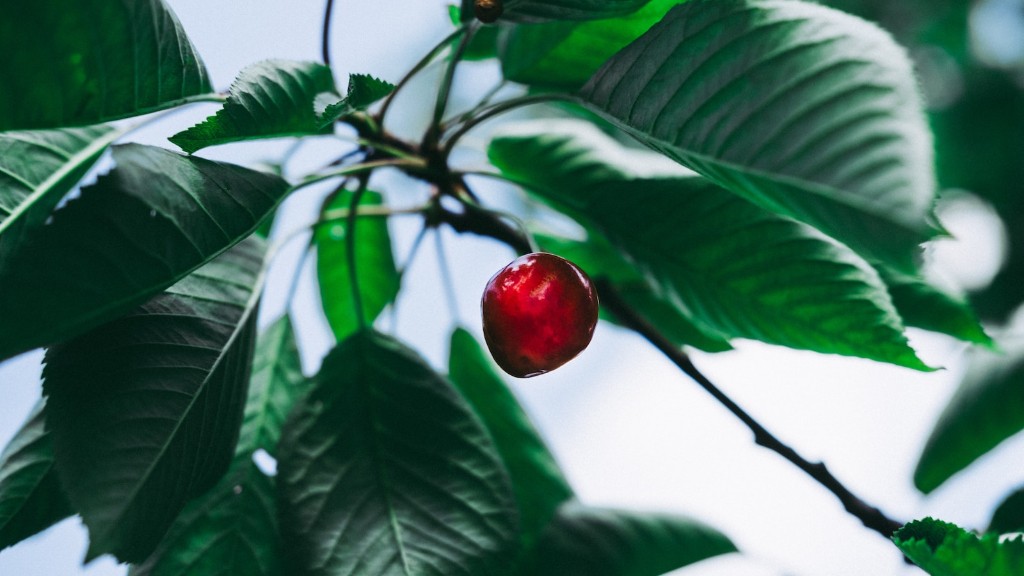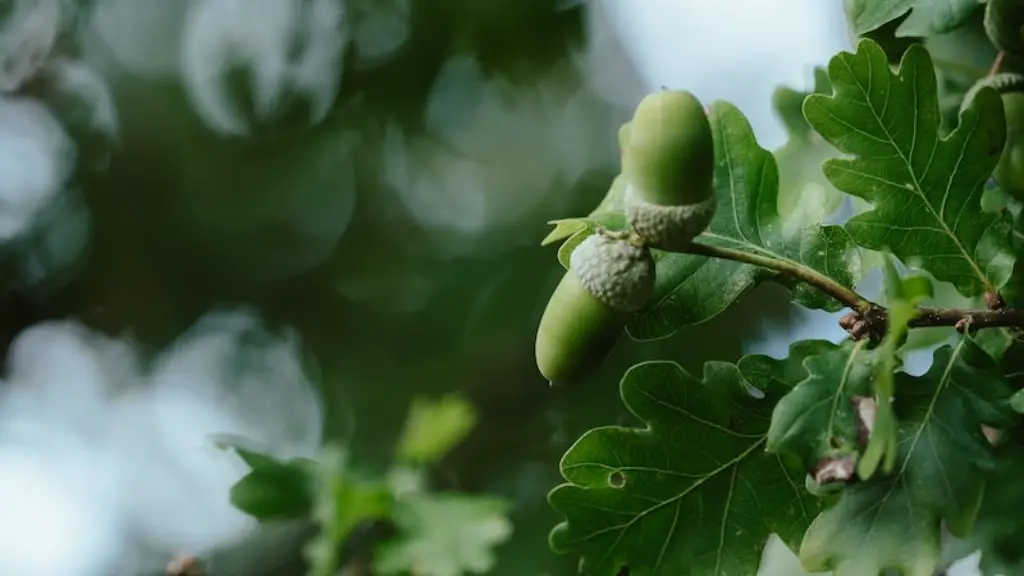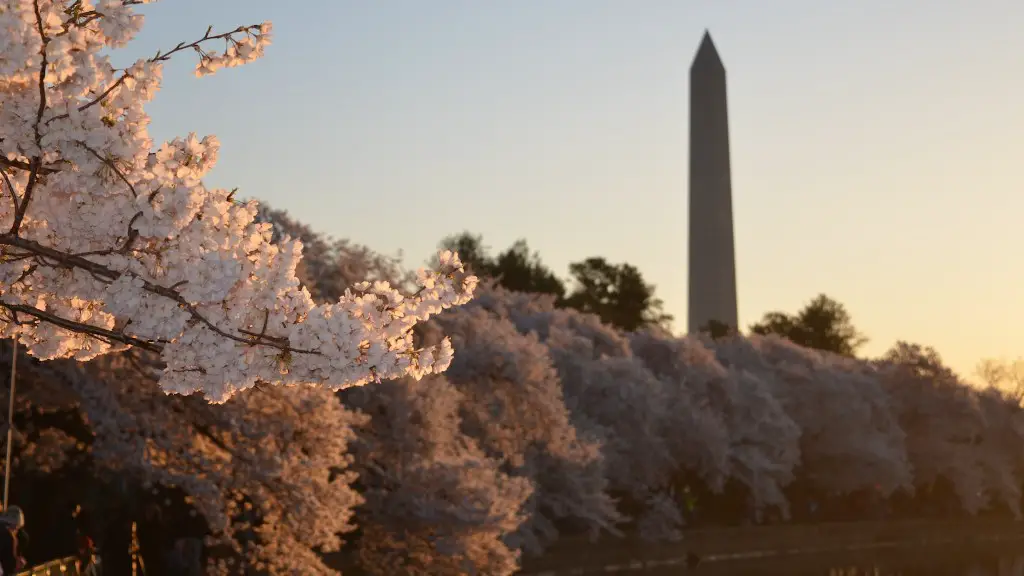Apple trees turning yellow is a common occurrence during certain times of the year, but these yellow leaves can be a cause for concern. The yellowing of the leaves can be caused by a number of factors, including nutrient deficiencies, environmental conditions, and pest or disease damage. While some of these causes are natural and unavoidable, others can be managed to try and prevent the yellowing of leaves.
Low Nutrients
Apple trees require adequate amounts of essential nutrients—such as nitrogen, phosphorus, and potassium—in order to produce healthy foliage and vigorous growth. When the soil lacks these nutrients, the leaves may become yellow due to nitrogen and phosphorus deficiency. Applying a fertilizer to the soil can help to alleviate nutrient deficiencies and provide the plant with the necessary nourishment for vibrant growth.
Pest and Disease Damage
The yellowing of apple tree leaves can also be caused by pest and disease issues. Insect and mite infestations can cause leaves to become yellow and eventually drop off, while fungal issues like blight and mildew may cause leaves to yellow, wilt, and eventually die. Apple trees can be treated with insecticides and fungicides, but it is always important to follow the label instructions when using these products.
Environmental Conditions
Environmental conditions such as low air circulation and too much shade can also cause apple tree leaves to turn yellow. When trees are exposed to too much shade for prolonged periods of time, the foliage will often begin to yellow and eventually drop off. Low air circulation can inhibit the uptake of nutrients from the soil and cause the leaves to become yellow. To fix this issue, it is important to prune and thin the tree in order to create adequate circulation and reduce shading caused by overcrowded branches.
Chlorosis
In some cases, the yellowing of apple tree leaves can be caused by a condition known as chlorosis. Chlorosis is the result of the tree’s inability to properly use the iron in the soil. Chlorosis typically appears as yellow-edged or yellow-streaked foliage due to the lack of nutrients. Before applying a fertilizer to the soil, be sure to have the soil tested to determine how much iron may be deficient in your apple tree.
Soil Compaction
Soil compaction can also be a cause of yellow leaves in apple trees. If the soil becomes too wet and compact, it makes it difficult for the roots of the tree to absorb the necessary nutrients from the soil. Compacted soil also prevents necessary air from circulating, which is vital for healthy tree growth. To fix this problem, it is important to aerate the soil to help with root growth and nutrient uptake.
Frosts and Droughts
Finally, excessive frosts and droughts can also cause apple tree leaves to turn yellow. Extreme temperatures can cause the leaves to become stressed, resulting in yellowing and eventual death of the leaves. If this happens, it is important to provide sufficient irrigation to the tree in order to keep it hydrated and to reduce the effects of drought. Similarly, during the winter months, it is important to provide adequate protection to young trees and shrubs against harsh frosts.
Pruning and Thinning
Pruning and thinning is an essential practice for apple trees. Pruning removes excess foliage and branches in order to create air circulation and reduce shading. It also helps to eliminate dead, diseased or insect-infested foliage, which can result in yellowing leaves. Thinning promotes healthy growth by removing overcrowding, which encourages the formation of new foliage. Thinning also helps to improve the overall structure of the tree, allowing it to take in more nutrients and air.
Mulching
Mulching is another important practice for apple trees. Mulch helps to keep the soil cool and moist and prevents root damage from extreme temperatures. It also insulates and protects the roots from compaction, which can cause yellowing leaves. Mulch can also help to prevent the growth of weeds, which can interfere with the uptake of nutrients from the soil and limit air circulation.
Fertilizing
Fertilizing can also help to improve the health of apple trees and prevent yellowing leaves. Applying a balanced fertilizer to the soil can provide the tree with essential nutrients and help to ensure healthy growth. Fertilizing can also help to improve soil structure and promote better root growth. It is important to ensure that the fertilizer is specifically formulated for apple trees, as applying the wrong fertilizer can cause damage to the plant.
Insect and Disease Control
Controlling pest and disease issues is important for the health of apple trees. Regularly inspecting for insects and diseases can help to identify any potential issues that may be causing yellowing leaves. It is also important to follow preventative measures, such as removing infested foliage, disposing of fallen infected fruit, and properly disposing of mulch that is placed around the tree. Applying an appropriate pesticide or fungicide can also help to prevent the spread of disease and keep the tree healthy.
Watering
Watering apple trees should be done regularly, but it is important to not over water them. Too much moisture can prevent oxygen from circulating in the soil, which can limit the tree’s ability to take up essential nutrients. It is also important to water the tree during extended dry spells in order to keep the soil from becoming too dry, as this can also lead to yellow leaves.



